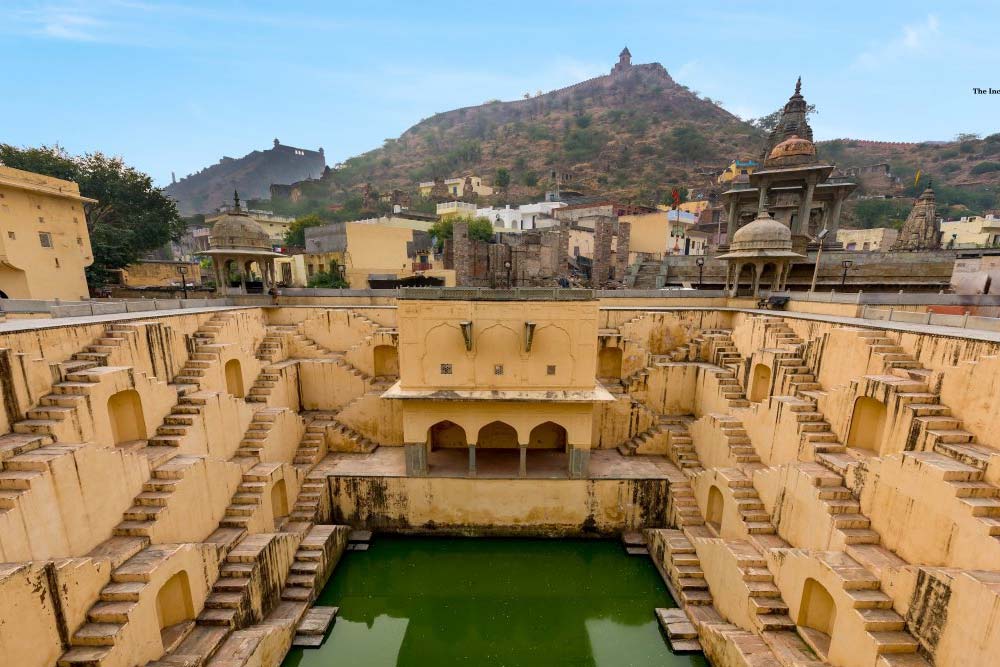Panna Meena Ka Kund: A Historic Stepwell in Jaipur

Strong 8k brings an ultra-HD IPTV experience to your living room and your pocket.
Located in the vibrant city of Jaipur, Rajasthan, Panna Meena Ka Kund is an ancient stepwell that combines stunning architecture, historical significance, and a deep connection to the region's water conservation techniques. Situated near the famous Amber Fort, the stepwell is one of the hidden gems of Jaipur, often overshadowed by more prominent tourist attractions. However, Panna Meena Ka Kund is a place of remarkable beauty, architectural ingenuity, and cultural heritage, making it a must-visit for those interested in the history of water systems in Rajasthan.
History and Architecture of Panna Meena Ka Kund
Panna Meena Ka Kund is believed to have been built during the reign of the Mughal rulers in the 16th century, though some sources suggest that it could have been constructed earlier, during the Kachwaha Rajput period. The well's name comes from two sources: "Panna" is a reference to the emerald (panna) stones that were once believed to be found in the area, and "Meena" refers to the Meena community, a local tribe associated with the region. The kund itself served as a vital water reservoir for the residents of the Amber Fort and the surrounding area.
The structure of Panna Meena Ka Kund is a perfect example of Rajasthan’s ancient water management systems. Stepwells, or baoris, are traditional Indian architectural features designed to harvest and store water, especially in arid regions. These stepwells allowed people to access water during the dry months while also helping maintain a steady water supply throughout the year.
The Panna Meena Ka Kund consists of several levels of descending steps that spiral down to the water source at the bottom, forming a multi-tiered structure. The stepwell is rectangular, with beautifully carved walls, arches, and decorative motifs. The entire complex is symmetrical, with a series of smaller steps and platforms that allowed people to stand at various levels as they collected water. It is a striking example of the interplay between form and function, where the design not only served a utilitarian purpose but also made the structure aesthetically pleasing.
One of the most remarkable features of the kund is its geometric precision. The structure has four entrances, and each side is designed with a series of staircases that lead down to the water, with rooms on the upper levels. The well is designed to harness water efficiently during the monsoon season, and the multiple levels allowed people to collect water as the water level rose. The kund also has beautiful arches and pillars, with intricate carvings that reflect the rich cultural and architectural heritage of the region.
Purpose and Function of Panna Meena Ka Kund
Like many other stepwells in Rajasthan, Panna Meena Ka Kund was built primarily for water storage and conservation. The region around Jaipur is characterized by a hot and arid climate, and water sources are scarce, especially in the summer months. The stepwell helped address this issue by collecting rainwater during the monsoon season, ensuring a steady supply of water for the people living in the area, including those who inhabited the Amber Fort.
The multi-tiered design of the kund allowed people to access water at different levels depending on the water table. This was particularly helpful in an era before modern water distribution systems, where people had to rely on natural sources for their water needs. The water in the kund also served other purposes, such as bathing, washing clothes, and religious rituals, which were often performed at such sacred sites.
In addition to its practical functions, Panna Meena Ka Kund also had cultural significance. It was a social space where people from the local community would gather, and its central location near the Amber Fort made it an important landmark. Many stepwells were also used for religious purposes, with people offering prayers to the water spirits and goddesses associated with water in Hinduism.
A Hidden Gem in Jaipur's Rich Heritage
Although Panna Meena Ka Kund is not as well-known as other historical monuments in Jaipur, it is a testament to the city’s rich cultural heritage and its understanding of water management in the harsh desert landscape. It is one of the few stepwells in Rajasthan that has been relatively well-preserved and continues to showcase the ingenuity of ancient engineers and architects.
Today, the stepwell remains a tranquil spot for visitors, especially those interested in Jaipur’s history and architecture. Its remote location, near the Amber Fort, makes it a perfect stop for anyone exploring the historic sites of Jaipur. While it may not be crowded with tourists, Panna Meena Ka Kund offers an opportunity to take in the beauty of the structure and learn about Rajasthan’s traditional water systems.
Visiting Panna Meena Ka Kund
Panna Meena Ka Kund is located around 2 kilometers from Amber Fort in Jaipur. The stepwell is situated at the base of a hill, and its proximity to the fort makes it easily accessible for those exploring the area. Visitors can walk down the steps into the well or simply admire the structure from the top. The kund is open to the public throughout the year and can be visited without any entry fee.
When visiting, it's essential to wear comfortable shoes, as the steps can be steep, and there are several levels to explore. It's also recommended to visit in the early morning or late afternoon to avoid the intense midday heat, especially during the summer months. The site is relatively quiet and serene, offering a peaceful respite from the more crowded tourist spots in Jaipur.
Panna Meena Ka Kund and Sustainable Architecture
Panna Meena Ka Kund is not only a historical marvel but also an example of sustainable architecture that reflects the resourcefulness of ancient communities in arid regions. Rajasthan's climate has historically been challenging, and stepwells like Panna Meena Ka Kund were critical to managing water resources efficiently. In an age when water conservation was a necessity, stepwells served as both practical and sacred spaces.
In modern times, as cities like Jaipur have grown, many traditional water management systems have been neglected. However, stepwells like Panna Meena Ka Kund remain symbols of an eco-friendly past that can provide valuable lessons for contemporary urban water management. In the face of climate change and water scarcity, revisiting such ancient techniques of water harvesting could be crucial for sustainable living.
Conclusion
Panna Meena Ka Kund in Jaipur is a hidden architectural gem that stands as a testament to the ancient wisdom of water conservation in Rajasthan. With its intricate design, historical significance, and serene beauty, the kund offers a glimpse into Jaipur's rich cultural heritage and the importance of water in the region's history. For visitors exploring Jaipur’s historical sites, Panna Meena Ka Kund provides a fascinating and peaceful experience, offering both historical insight and a chance to appreciate the skill of ancient engineers.
Whether you are an architecture enthusiast, a history buff, or someone seeking tranquility in the midst of a busy city, Panna Meena Ka Kund is a must-visit. Its timeless beauty and historical importance make it an essential part of Jaipur’s rich tapestry of heritage.
Note: IndiBlogHub features both user-submitted and editorial content. We do not verify third-party contributions. Read our Disclaimer and Privacy Policyfor details.







